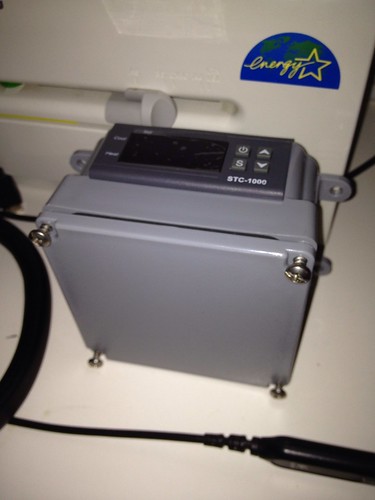carlisle_bob
Well-Known Member
I recall a post several weeks back about it somewhere on here by Carlisle Bob, explaining about replacement probes for most of the common temp controllers. It was over my head. But iirc he made it seem that for the ebay temp controller finding the correct replacement probe, was nigh on impossible.
I'll try to pm him to say something about this.
Hi
Ok, here goes again on the probes:
1) You need one that's 10K ohms nominal resistance at 25C. That's pretty easy, just be sure you don't get ones that are 10K at 20C.
2) You need one that's an NTC (negative temperature coefficient) not PTC (positive temperature coefficient). Again pretty easy.
3) You need one that's pretty close to 10K. A 2% part would put you .7C off, a 10% part will put you off by about 3C.
4) You need one with the right beta or slope. This is where it gets tough. Thermistors come in a wide range of slopes (change in resistance versus temperature rates). On a good controller, the slope of the probe is programmed into the unit on a batch by batch basis. Even if you had a specific number, the data you see is often less than helpful since they don't state test temperatures. Simple answer - the one you get is not likely to be the right slope.
So, can you replace the probe? Yup, can be done easily and cheaply. Will the probe "work"? Yes it will run the controller. No it's not likely to read accurately over a range of temperatures. How wide a range depends on how accurate you need to be and how close your part happened to be.
Is that the full story? - no. It's enough to give you a pretty good idea of what's going on when you try to do a replacement.
Bob







